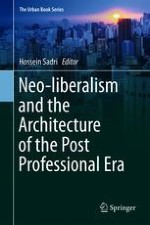2018 | OriginalPaper | Chapter
15. Urban Productive Landscapes: Designing Nature for Re-acting Neo-liberal City
Author : Emanuele Sommariva
Published in: Neo-liberalism and the Architecture of the Post Professional Era
Publisher: Springer International Publishing
Activate our intelligent search to find suitable subject content or patents.
Select sections of text to find matching patents with Artificial Intelligence. powered by
Select sections of text to find additional relevant content using AI-assisted search. powered by
